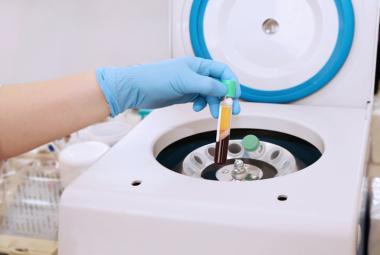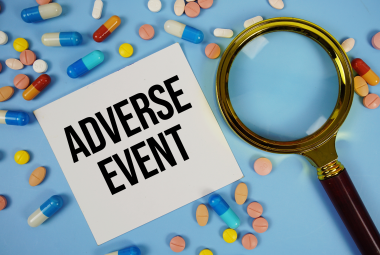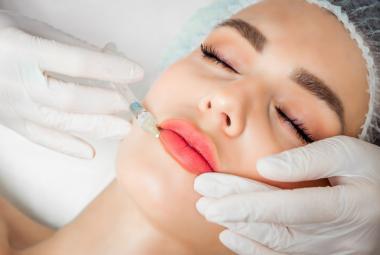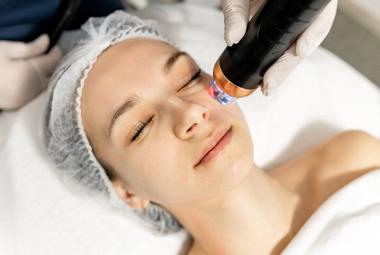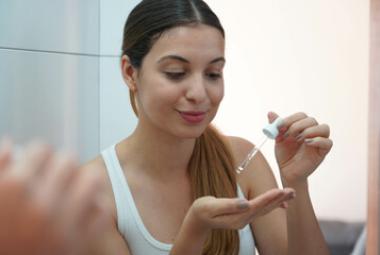Nice to meet you!
I’m Nichole Campbell, Nurse Practitioner and the newest member of the InfantRisk Center. When I started at the IRC last year, I enthusiastically embraced my role in supporting lactation pharmacology research and getting moms connected with the answers I knew they were looking for – because I am looking for them too (fun fact: I am currently breastfeeding my third baby, so I personally feel the pain of the unknown)! As a self-proclaimed "scrunchie mom" (almost crunchy, but not all in), I've always gravitated towards "natural" and "clean" alternatives, within reasonable bounds, for my family. As an actively practicing Emergency Nurse Practitioner, I understand the worst-case scenarios when questions go unanswered--leaving women to make decisions without evidence or validation.
Before joining the IRC, I spent countless hours scouring Google, UpToDate, PubMed, and various other sources in search of answers regarding herbal remedies. I was personally interested in using herbals, but I wanted to be certain that the products that I was interested in would not harm my baby (if you're reading this, chances are you've found yourself in a similar situation, seeking reliable information amid the scarcity of evidence-based data). In my new role, I was excited to be able to offer more than “I have no idea what that is or what it will do. Sorry.” to my pregnant or breastfeeding patients. When I mentioned my frustration and plan to take care of this problem once and for all to Dr. Krutsch, she graciously provided opportunities to find out of my own volition that it wasn’t going to be as easy as I thought. She probably understood that being told no wouldn’t have worked very well for someone like me, and deep down, I think she might be a “scrunchie mom” who wants these answers too.
The unfortunate truth I’ve found so far is that there is a lack of substantial evidence in this area. It is important to me for fellow providers and breastfeeding moms to understand why we don't have the specific answers for herbal remedies as we do for pharmaceutical drugs (no, it’s not big pharma’s fault). Despite the challenging nature of this topic, I am collecting information to provide recommendations with the goal of enabling mothers to make decisions grounded in science and evidence rather than mere opinions (there will be a long herbal post coming this year!).
To help readers understand the issue at hand, I am going to walk you through my experience diving into my first herbal topic at the IRC: Ashwagandha (a medicinal herb).
Ashwagandha is one of the most commonly asked-about herbal supplement related questions we get at the IRC. In response, Dr. Krutsch assigned me the topic for a web article, first tasking me with finding the source of data for medical claims: What is the primary evidence supporting the claims for effectiveness, for safety? Halfway into my research and article on ashwagandha, I announced my frustration with my lack of progress. My challenge lies in the obscurity of substantiated data. I have read hundreds of pages of literature on Ashwagandha. For every referenced claim, I look up the cited literature. It refers to another claim from a different source. I look up that cited literature, and it cites another source…I’m still looking. Either it doesn’t exist, or I haven’t found it yet. It is maddening, but while I’m still investigating, let’s pivot.
Why couldn’t we just ask moms taking ashwagandha for milk samples like we do for prescription medications?! Upon this logical suggestion, Dr. Krutsch announced I was ready for the next step: my first visit to the InfantRisk laboratory. It was fascinating! Dr. Datta, our bioanalyst, guided me through the lab, elucidating the process of developing a standard curve to identify and study the specific chemical compositions of drugs and their concentrations in milk samples. Before any bioanalysis, the challenge lies in isolating the drug from the other components in the milk. This is a very crucial step in order to avoid complications with the instrument. Then, she demonstrated the intricate process of evaluating each sample, utilizing equipment that, despite its seemingly modest size, commands a substantial price tag. To prepare a standard curve, we use the specific, purified drug of interest in known quantities.
If we were to analyze the amount of ashwagandha that transferred into milk, the first question is, what is ashwagandha? Withania somnifera. A shrub. It’s a small evergreen shrub. How do we get from shrub to a standard curve? A shrub is not one “substance.” How many substances in this shrub are physiologically active and should be analyzed and evaluated to determine if they are found in milk? The leaves and the roots are apparently even composed of different molecules. We have to have a good understanding of the herb’s molecular bioactivity before we can start any analysis on milk. While it is possible to figure out which molecules, it is extensive, costly, and complicated. At least 3-5 standard curves would be needed for this “one” pure ashwagandha herb.
Assuming we can create quality standard curves for the active components, the next step would be to ask ashwagandha-exposed mothers for their milk. But…how much ashwagandha are they taking so we can confidently let you, as providers and mothers know what the donor moms took that resulted in the amount we found in milk? Not all supplements label the quantity of their “doses.” Even if they did, the FDA doesn’t monitor if the labeled content is accurate…it’s all post marketing surveillance . The concentration of active/ harmful ingredients in a particular manufacturing facility can vary very widely based on the factors such as harvesting location, timing, and collection methods of these herbs. Our overall understanding remains limited, mainly due to absence of standardized reporting mechanisms. So maybe we only ask for moms who were taking one specific, ashwagandha-only product to donate milk? Queue more frustration. (Fun Fact: I used to trust supplement labels. In a study testing labeled dose claims, researchers found a product with 478% more melatonin than what was on the label and in this recent review, the contents of 11 out of 12 prenatal vitamins don’t match their labels!).
In summary, to perform milk analysis on herbal supplements, we need 1) a decade of background information on the active components of the herbal, 2) funding for multiple standard curves, 3) milk samples from women taking known quantities of the same branded herbal product, and a 3) a detailed schedule of the “dosing” (ideally at steady state concentrations). Then, we will have a chance of reporting information for one branded product. How can one confidently say “I know this will not harm your baby” when we do not have the ability to examine each specific brand of herbals available due to these barriers?
Our mission at the IRC is to safely keep mom and baby breastfeeding. We genuinely care about mothers and their babies and never want to give recommendations that could cause harm.
Our upcoming recommendations will be a result of many hours of research from herbal textbooks, primary literature, and review of case reports from women who decided to take herbals. In the future, we may try to collect what data we can on our own from callers who have decided to use herbals. Again, we want to be able to provide you with answers, we just want to make sure that they are backed by the same high-quality science and research that the IRC is famous for. We hear you, and we are trying.
Research on drugs-in-milk is not only time-consuming. It is expensive. The IRC is primarily funded by donations…If you are feeling generous to learn about a specific brand of ashwagandha, let’s talk.
Nichole Campbell, MSN, APRN, NP-C
Assisted by Drs. Krutsch and Datta and the clarify of their patience, humor, and many years of experience.


